Don't wanna be here? Send us removal request.
Text
SURGEON OF OTTOMON EMPIRE

Once the Ottoman Empire was on its way to becoming an empire, it had begun to raise valuable and precious people. Sabuncuoglu Serefeddin was born in Amasya in 1386, an Anatolian city known as the city of princes and extremely important for the Ottoman Empire. This man has been so successful throughout his life that he has become a pioneer in medicine. During the reign of Sultan Mehmet the Conqueror, who conquered Istanbul, he became the most famous physician and surgeon of his time. In this article I will share with you some information about Sabuncuoglu Serefeddin, who is one of the most important people of his time and should never be forgotten. Before I start to tell Sabuncuoğlu Şerefeddin, the most valuable doctor of his time, Şerefeddin was born in Amasya in 1386.
His father's name is Ali Çelebi and his grandfather is Sabuncuoğlu Hacı İlyas Çelebi. Like Sabuncuoğlu Şerefeddin himself, his father and grandfather were famous and successful physicians during his lifetime. His grandfather Sabuncuoğlu Hacı İlyas Çelebi had been physician in the years of 1421-1451 in his father Ali Çelebi between the years of 1408-1421. Sabuncuoğlu Şerefeddin had received his basic education from Burhanettin Ahmet. He was only 17 years old when he was very young. Sabuncuoglu Serefeddin, who gave his life to read, research and essay, proudly states that he has been practicing medicine for 14 years. Sabuncuoglu Serefeddin followed a different path than other physicians in his lifetime and he was particularly interested in surgery. In the 1400s, physicians were generally not interested in surgery. They even preferred medication, even when surgical treatment was necessary. There was not enough technical opportunity at that time and the treatment methods were technologically very primitive.
The surgical intervention was difficult and the danger to the patient was very high. That is why physicians were careful not to perform surgical intervention in general. Sabuncuoglu Şerefeddin did not abstain from surgical treatment and achieved extraordinary success. He became a famous surgical physician and became the first Turkish surgical owner. Sabuncuoglu Serefeddin has gone beyond his years with surgery. Because he was doing firsts. One of the three most important surgeons by Arab medical historians. Sabuncuoğlu Şerefeddin has been working for 14 years at the Amasya Bimarhane, where he was regarded as the hospital of that period. As a result of his studies over time the name was heard in all Anatolia. Today, there is even a hospital in Amasya. Sabuncuoglu Serefeddin has three major works which he wrote as a result of his researches, studies and treatments. These are akhabadin, kitabü Ml -Cerrahiyyeti’l er Haniyye and Mücerreb-nam. Mücerreb-name is one of the most important works of Sabuncuoğlu.
Read more visit my blog
0 notes
Text
KATIP CELEBI
KÂTİP ÇELEBİ (1609-1657): He was born in February 1609 in Istanbul. Information about his life is based on autobiographical works he wrote. His real name is Mustafa, his father's name is Abdullah. He became famous as Kâtib Çelebi among scholars, Hacı Halîfe among the members of Dîvân-ı Hümâyun, and Hacı Kalfa in the Western world. He was brought up from his father, Enderun, and was apprenticed with a task related to armed forces, he participated in the councils of the scholars and sheikhs of the period and showed great interest in science . When Kâtib Çelebi was five years old, he received the first religious information from Asa Halîfe al-Kırîmî, whom his father hired privately, and partially memorized the Quran. Later, he took grammar lessons from İlyas Hoca and writing lessons from Böğrü Ahmed Çelebi . When Kâtib Çelebi was fourteen years old, his father gave him 14 dirhams of pocket money from his salary and took him with him.
Thus, he entered the Anatolian Accounting Office, one of the items of Dîvân-ı Hümâyun , and learned the rules of account, power and politics here. He lost his father in August 1626 and his uncle a month later in Nusaybin. He stayed in Diyarbekir for a while. He was appointed to Süvari Quran by one of his father's friends, Mehmed Halîfe . When he returned to Istanbul, he continued the lessons of Kadızâde Mehmed Efendi. He participated in the Hamadan and Baghdad expeditions under Hüsrev Pasha's entourage. In his works Cihannümâ and Fezleke , he described his observations about cities and destinations such as Gülânber Castle, Hasanâbâd, Hamadan, Bîsütûn, which they visited or conquered during these expeditions . He died on the morning of October 6, 1657 and was buried in the cemetery around Zeyrek Mosque. THE LITERARY PERSONALITY OF THE CIPY CELEBI: His devotion to science and learning was after the Revan Campaign in 1635. Kâtib Çelebi, who explained his observations of this expedition in great detail, gave his later life almost entirely to scientific studies.
He invested a small legacy left to him in books. He started to write the names of the books he saw in secondhand shops while in Aleppo. Kâtib Çelebi, who liked to read works of history, saints and faithfulness, had read many such books until 1636 . Kâtib Çelebi, who has been dealing with science day and night for ten years, sometimes devotes himself to a book , forgets everything, a candle lights up in his room until the sun rises, and he never felt tired from it. On the occasion of the 1645 Crete expedition, he was also interested in mapping. Meanwhile, he left the civil service when he quarreled with the chief caliph over the staff issue . Kâtib Çelebi, who taught his son on various subjects besides other students, read medical books in order to learn the ways of healing during his illness, and also studied the esma and havas books in search of spiritual cures. for he was sure of the healing effects of prayers made with a clean heart. He translated some works from Latin to Turkish with the help of the Muslim French-born Mehmed İhlâsî . THE WORKS OF KÂTİP ÇELEBİ:
The most important works of Kâtip Çelebi,
To read more visit my blog
0 notes
Text
Evliya Çelebi ottoman traveller

Even though those who know him call him 'the cheerleader', 'the master', he called himself the one he knew (hezar-familiar), the non-hypocritical (bi-riya), human friend. He has traveled a lot, has seen a lot, and the most beautiful is what he has seen. Who am I talking about: Evliya Çelebi. When we say traveler, Evliya Çelebi comes to mind first. He traveled from one end of the Ottoman Empire to the other with his travels. He went beyond the Ottoman borders, either in the nature of the pashas or as a government official. He made notes about the places he visited and made comparisons. He collected these near-death notes in the Book of Travels. He says that he was born in Istanbul on 25 March 1611 AD, 10 Hijri Muharram, 1020. “10 Muharrem” is an important day for Evliya Çelebi: the day of Ashura.
He gave the dates of the days he considered important, as "10 Muharram". He started his education in the primary school in his district and then continued in a madrasah. While he was a hafiz in Ayasofya Mosque in 1635, IV. He entered the palace with the admiration of Murat and received education for 5 years. Apart from Turkish, he learned Arabic, Persian, Greek and Latin. Evliya's life changes with the dream she saw on 10 Muharram 1040/19 August 1630 (another day of Ashura) . In his dream, in Ahi Çelebi Mosque, Hz. He saw Muhammad and his companions together. Hz. While kissing the hand of the Prophet, he would say "Intercession ya Rasulallah" and said "Travel or Resulallah". Hz. The Prophet also smiled and prayed, "Make travel and visit easy for this servant, O Lord." After that, he kisses the hand of the companions in the congregation and takes their prayers. Sa'd bin Ebu Vakkas from among the Companions advised him to write what he saw during the trip.
After the dream, Evliya Çelebi begins to explore Istanbul. He made his first trip out of Istanbul to Bursa in 1640. Bursa trip was
Read more visit my blog
0 notes
Text
ASTRONAUT(OLUG BEG)
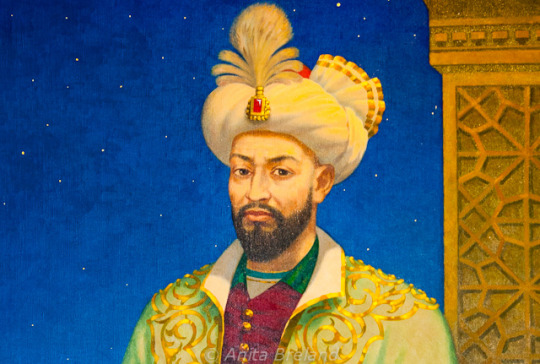
hello friend on this issue i will tell you about the great mosque astronaut of mersolo pack and about his observatory about look back's museum and many interesting things let's go after climbing to the top of the steps you will see the statue of mirza all back with mirza ulubeck mirza was born in 22 march 1394 and days and 27 october 1449 was a timurid sultan as well as an astronomer mathematician ulbek was notable for his work in astronomy related mathematics such as trigonometry and spherical geometry as well as his general interest in arts and intellectual activities it is thought that he spoke five language arabic person turkish mongolian and small amount of chinese during his rule first as a governor then outright timurid empire achieved the cultural peak of the timory renaissance through his attention patronage samarkan was captured and given to all back by his father chakra he built the great old big observatory in samarkand between 40 24 and 40 29 okay now on on the top first of all i will look at the museum and show you a little what is inside the museum oh baby memorial museum uzbek mirza oleg musee is a museum dedicated to the fame medieval central asian statesman mathematician astronomer and poet merzollo back and the historical astronomy of the region located in the city of san marcos biggest opposite the olympic observatory to the right of the museum love the museum itself and the observatory are located on a small hill there is a monument to pull back against the background of a stale which depicts a starry sky the museum was opened in 1964 during the leadership of uzbekistan
rashidu the author of the project is the architect baba hanov in 2010 a large-scale capital restoration a reconstruction of the olympic observatory museum and nervy historical sites was carried out the museum tell about the life work and scientific life of mirza lubeck about astronomy and mathematics of that era the museum presents historical astronomical and mathematical objects and instruments historical books and many scripts found exhibits from the ruins of the observatory and its surrounding areas including from africa reduced models of architectural monuments of samarkand and some other cities of uzbekistan including models of some architectural monuments buhari and shahri subs and other exhibits and this is silver and copper coins minted in the era of amir timur of century the 15th century writing accessories pencil case lamp and container pencil and book stand you see now the soul of the 15th century did you imagine a column fragment of mirza lubeck observatory 15th century see it and nearly on camera okay and this is model
Read more visit my blog
0 notes
Text
Rainbow theory

Whether it is a child or an adult, the person must be excited to see the rainbow. Most will stop for a moment and look up to the sky to enjoy this beautiful nature phenomenon.Have we wondered why the shape of the rainbow is always semi circle? And you know that actually the rainbow does not even exist? Yes, the rainbow does not exist. When sunlight beams through water droplets, it is refracted or it is bent. Then, it is reflected on the surface of the droplet and refracted again to get out of the droplet. The electromagnetic spectrum consists of light with different wavelengths. So, the spectrum is spread out and forms a rainbow. So, what exactly is a rainbow? It's just an optical illusion when viewed from an angle of 42° by turning your back on the sun. It all depends on our point of view. If two people see the same rainbow, each will get different views based on the angle from which they see it.
Because the sun is spherical, its light reflection is round. The visual limit of the human eye cannot surpass the horizon. Because of that, only half of this form can we see. Maybe, if the sun is a cube, the resulting rainbow is in a rectangular shape. Who knows? So, actually rainbow does not even exist. It is not an object and we cannot touch it. In addition to the semi-circular shape in the sky, rainbows can also result in waterfalls, in fog, dew, waves and wherever light meets water droplets and seen from angle of 42 °. In Greek and Roman times, the rainbow is believed to be a path to an eternal place. Some consider a pot with gold waiting at the end of each rainbow. In fact, some still believe.
0 notes
Text
WORLD MAP INVENTOR
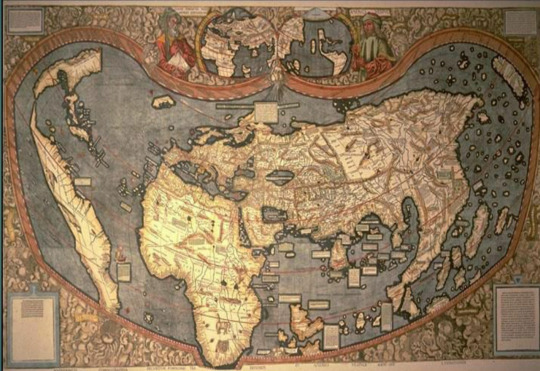
The Piri Reis (a.k.a. Piri Re’is) map has long been considered anomalous one of the most noteworthy examples of advanced geographical knowledge during The Great Age of Exploration (1400 to 1550). What makes this map so significant is that was drawn in 1513, but it displays information regarding the shape of the continents that exceeds the available knowledge of the time. Although several maps exist from the 16th century and earlier, the Piri Reis map stands out due to the source of information to which it is attributed, as well as the remarkable detail of the various coastal outlines depicted in the map. The map was discovered by a group of historians in 1929 in Istanbul (formerly known as Constantinople), Turkey, while renovations were taking place on the Imperial Palace.
The map was painted on a parchment made out of gazelle skin and dated in the Muslim year of 919, which corresponds to A.D. 1513. It was also signed by Piri Ibn Haji Memmed(a.k.a. Piri Reis), a well-known admiral in the Turkish navy who had a love for cartography. Piri Reis himself stated that the map was somewhat of an assemblage of 20 various maps that had been drafted during the time of Alexander the Great. The detailed information regarding the placement of continents on the map is phenomenal due to the fact that the map itself predates the“Age of Exploration”, where cartographic knowledge truly began to blossom. One of the foremost researchers of the PiriReis map was a geographer and historian by the name of Charles H. Hap good. He published a popular book in 1966 entitled Maps of the Ancient Sea Kings, which provided detailed technical information regarding the history of anomalous maps and their correlation to then-current geography. Hap good employed mathematical disciplines such as spherical trigonometry to show the relation between the features of certain anomalous maps and their actual corresponding geographic locations.
To read more visit my blog
1 note
·
View note
Text
Master of Architecture (mimar Sinan)
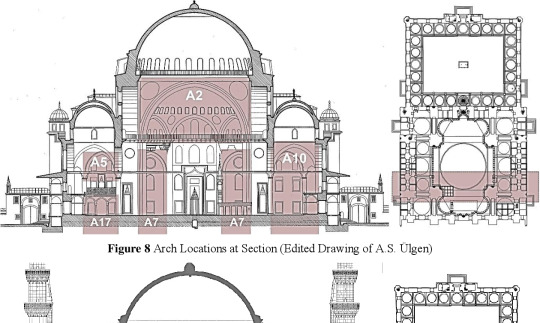
Letter from Mimar Sinan to 400 years later. The legend of letters written 400 years later appears before everyone who is curious about the life of Mimar Sinan. Whenever there is a program about Mimar Sinan, this question comes to mind. Did Mimar Sinan really hide a letter in a bottle that would be read in 400 years? Let's recall this legend that even managed to enter secondary school textbooks. An interesting event occurs during the restoration of the Şehzadebaşı Mosque, a work of Mimar Sinan, in the 1990s. The civil engineer of the company that made the restoration describes his experiences in a TV program as follows “There were rotting in places on the stones forming the arches above the doors on the money line wall surrounding the garden of the mosque.
The restoration program was part of the renewal of this belt. We learned theoretically how arches were built at the construction faculty, but we did not have practice in stone arch construction. We had a meeting with the masters about how to restore the arches. As a result, we were going to strike a wood buckle licking the belt from below. Later, we would remove the belt slowly and get notes about the construction techniques and we would make use of these notes in rebuilding it. We made the mold. We started to move the belt lock removal. When we removed the stone, we found a glass bottle placed in a cylindrical cavity at the junction point of the two stones. There was a rolled up white paper in the bottle. We opened the bottle and looked at the paper. He was writing something in Ottoman language. We immediately found an expert and had them read. This was a letter and it was written by Mimar Sinan.
To read more visit my blog
0 notes
Text
Al mawardi
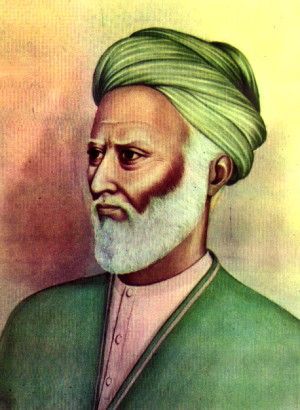
introduction when the Muslims built a world empire and actual needs arose they tackled all these issues and tried to reach definite conclusions on all of them in the light of the Quran and the Sunnah. The Quran, is however, silent on all these issues, because their meaning is ever-changing with historical evolution. Besides, the Quran does not aim to create a state but to create a society. Hence whatever the form and shape of the state, if the Quranic society is realized in it, it may bear the designation of the Islamic state. Imamate.
The historical situation explains al-mawardi's efforts to propound the theory of the caliphate in which everything depends on the authority of the caliph. Al-Mawardi is nota philosopher at all, that he is least interested in abstract thinking. He is a jurist and builds on the opinions of his forebears. His greatest merit lies in the fact that he abstains from abstract speculation and correlates the opinions of the jurist to the historical perspective of his age. This will give us a true estimate of Al-Mawardi's achievements: (1) The institution of the Imamate is necessary as a requirement of the Sharia and not as a requirement of Reason. The appointment of an imam by the consensus of the Muslim community is obligatory.
To read more visit my blog
0 notes
Text
Pioneer of scientific Revolution
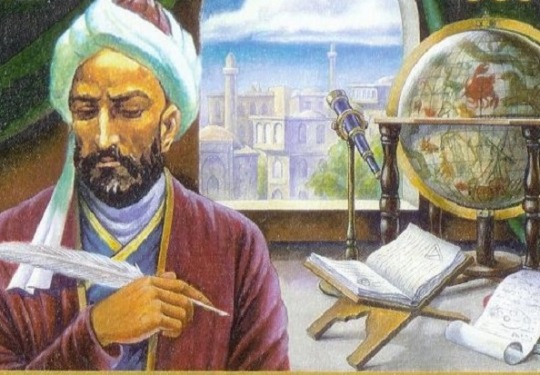
The 15th century Renaissance astronomer Nicolas Copernicus is widely regarded as one of the most influential minds of mathematics and astronomy and a pioneer in starting a scientific revolution. His work led to a rethinking of Ptolemy's geocentric model of the universe to a heliocentric one. However upon closely studying the writings of Copernicus, researchers have discovered that much of his work was identical to that of medieval islamic scholars who lived a few centuries before. The most obvious evidence of Copernicus's use of medieval islamic mathematical texts is a near-perfect copy of a statement of a mathematical theorem along with its proof invented during the 13th century by al-Tusi.

The diagram shows what is called the Tusi couple, a theorem first stated and proven by al-Tusi to answer the question of how to generate a linear motion from the combination of two circular motions. Some researchers suggested that Copernicus's work could be an independent proof. However while studying Copernicus's manuscript and the original Arabic manuscript of al-Tusi, scientists willy Hartner who was the president of the international academy of history of science realized that the two proofs used the same alphabetic designators for essential geometric points and came to the conclusion that Copernicus must have copied from altussi's work.
In his 1973 work titled "Copernicus the man the work and its history" Hartner writes that "what proves clearly that we have to do with the case of borrowing is the lettering of the diagrams found in the Tusi's manuscripts and in de Revolutionibus. In both the letters a, d, b, g,and h denote the same characteristic points. A reasonable explanation would be that Copernicus, doubtless in Italy saw the diagram in a manuscript of Tusi's astronomical treaties Tadhkira and asked somebody who knew Arabic to translate the passage for him. As elaborated by George Saliba in his book on Islamic science "where Tusi's proof designated a specific point with Arabic letter "Alif", Copernicus's proof signaled that same point with the equivalent phonetic Latin letter A, where Tusi had "Ba" Copernicus had B etc. except in one case where Tusi had zainand Copernicus had F. The small mis translation is easily explained by the similarity btw two letters zain and fa in medieval Arabic manuscripts which to an inexperienced reader of Arabic manuscripts would likely have been easily misread.
To know more about it visit my blog
0 notes
Text
IBN SIRIN
The Story of Ibn Sirin & Honey - Khalid Basalamah Muhammad ibn Sirin he once bought some honey. And he bought it on a large earthen jar. This jar in ancient times, maybe able to accommodate around 200 kilos to 250 kilos of honey. When he bought it, he put it on that jar. Apparently at night, he forgot to close the lid. Then entered the rat.
0 notes
Text
HISTEROGRAPHER (IBN KHALDUN)
Historiography is the study of how to record history and how to understand it and many consider Ibn Khaldun to be the forerunner in the field. He was born in Tunis in 1332 CE. He traced his family’s origins to Andalusia,Muslim Spain during the eighth-century, when it was newly conquered by the Umayyads. Before that, he claims to have descended from tribe in Yemen.
0 notes
Text
IBN RUSHD
Mhummad ibn ahmad ibn rushd in europe he is known as averoess he was born at cordova there his father and grand father were judges he got his early education of philosophy,law and medicine from abu jaer harron and from ibn baja he had fond of read books he always went to library to read books that library was build by a caliphate at that time that library had 50000 books ibn rushd was called by morocco caliphate and he was and he had physician duty there when morocco caliphate died then his son yaqub al mansor exiled
1 note
·
View note
Text
GEOGRAPHER AND TRAVELER
Ibn Battuta was a Muslim traveler, Moroccan scholar and explorer Who traveled extensively in the medieval world. Over a period of 30 years Ibn Battuta traveled mostly to the Islamic world and many non-Muslim lands. Including Central Asia, Southeast Asia, India and China Ibn Battuta was a medieval Muslim traveler. Who wrote the most famous travelogues in the world.
1 note
·
View note
Text
EARLY COMPUTING INFORMATION
The earliest recognized device for computing was the abacus, invented in Mesopotamia around2500 BCE. It’s essentially a hand operated calculator, that helps add and subtract many numbers. It also stores the current state of the computation, much like your hard drive does today. The abacus was created because, the scale of society had become greater than what a single person could keep and manipulate in their mind.
1 note
·
View note
Text
AL KINDI
Abu Yusuf ya'qub Ibn Ishaq as Sabah al-kindi born in 801 AD in Kufa he is known as the first Muslim philosopher During his life besides being able to speak Arabic he was proficient in Greek and Syriac in the western world he is known as alkindus Al-kindi
1 note
·
View note
Text
CYCLONE
On the evening of November 12, 1970 the Bhola cyclone barreled up the Bay of Bengal. There were sustained winds of 240 kilometers per hour and a storm surge, or flooding that raised the sea level, up to 10.4 meters -- that’s 34 feet! The damaging wind and flooding were devastating, and as of 2021 the Bhola cyclone is the deadliest tropical cyclone in history, killing an estimated 300,000 to 500,000 people.
0 notes
Text
ICE CREAM CONE INVENTOR
During a hot Summer day, we love ice cream.Especially the ones with the waffle cones. But how did we get these amazing ice cream cones? Well, a lot of people claimed that they invented ice cream cones but most historians says that originally the Muslim man,
0 notes